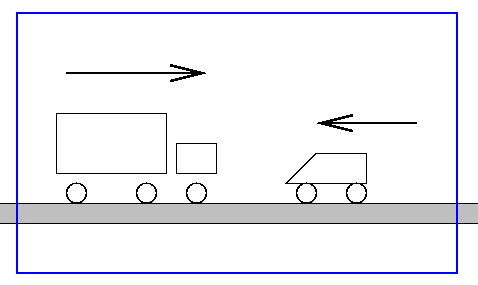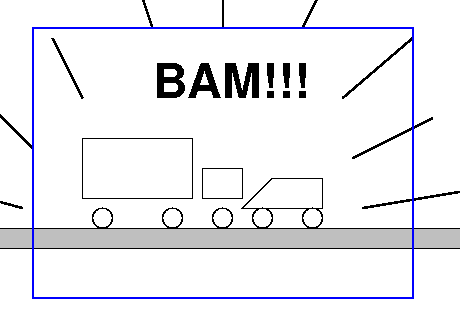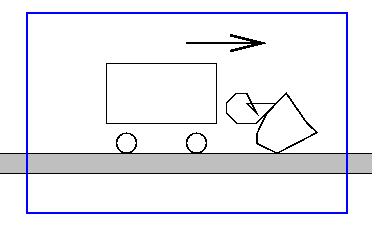


 Copyright © Michael Richmond.
This work is licensed under a Creative Commons License.
Copyright © Michael Richmond.
This work is licensed under a Creative Commons License.
There are times when momentum is not exactly conserved, but it is still useful to get a rough idea for the result of a complicated process.
Example: A big truck travelling at 60 mph southwards collides with a minivan going 55 mph northwards. Which way does the mangled wreckage slide afterwards?



The natural choice for "system" here is "the truck and the minivan". If we try to include a significant chunk of time before and after the collision, then we have to deal with external forces of friction on the tires of the vehicles, air resistance, and so forth. The wreckage will eventually slide to a halt, due to friction, and all the momentum will disappear (it really ends up being transferred to the ground).
But if we focus in on the collision itself, looking at a narrow slice of time just before and just after,




then momentum will be ALMOST exactly conserved: over this small interval, the external forces (friction, air resistance) are much less important than the internal forces between the two vehicles.
Example: A big truck of mass M = 10 tons travelling at 60 mph southwards collides with a minivan of mass m = 1 ton going 55 mph northwards. Which way does the mangled wreckage slide afterwards, and how fast does it initially move?
 Copyright © Michael Richmond.
This work is licensed under a Creative Commons License.
Copyright © Michael Richmond.
This work is licensed under a Creative Commons License.